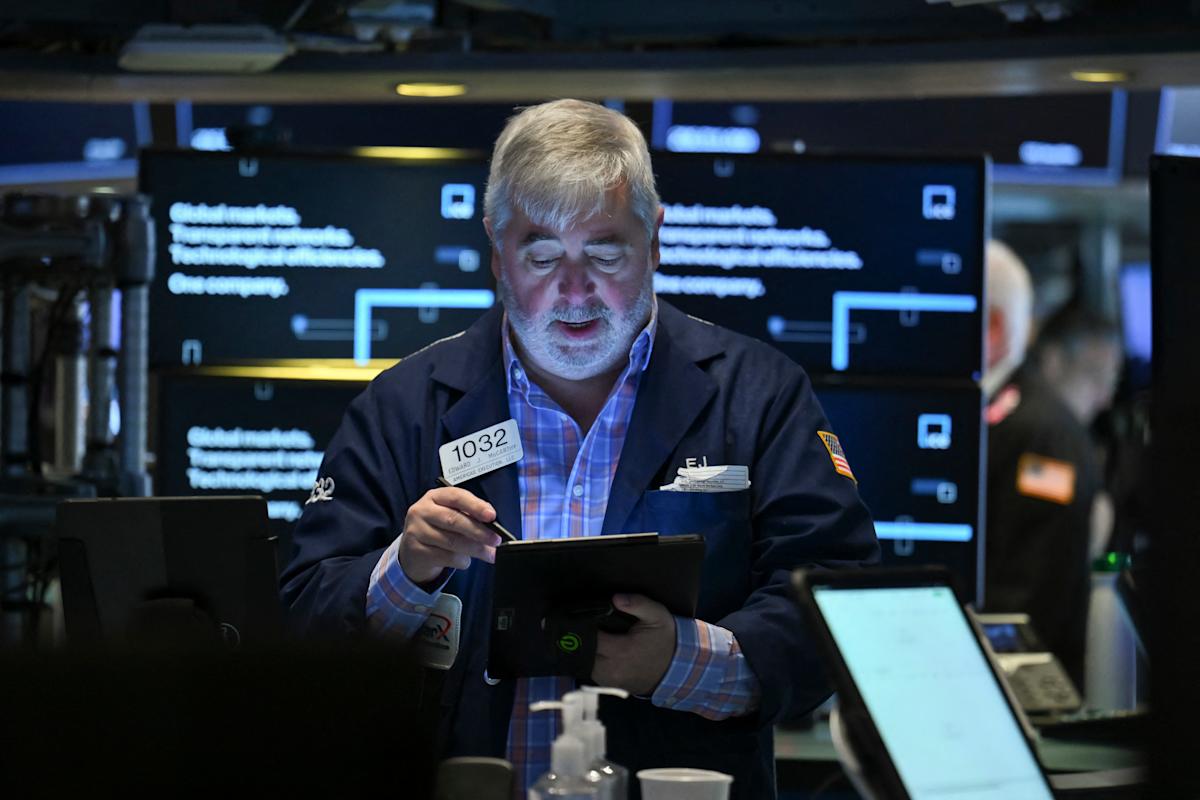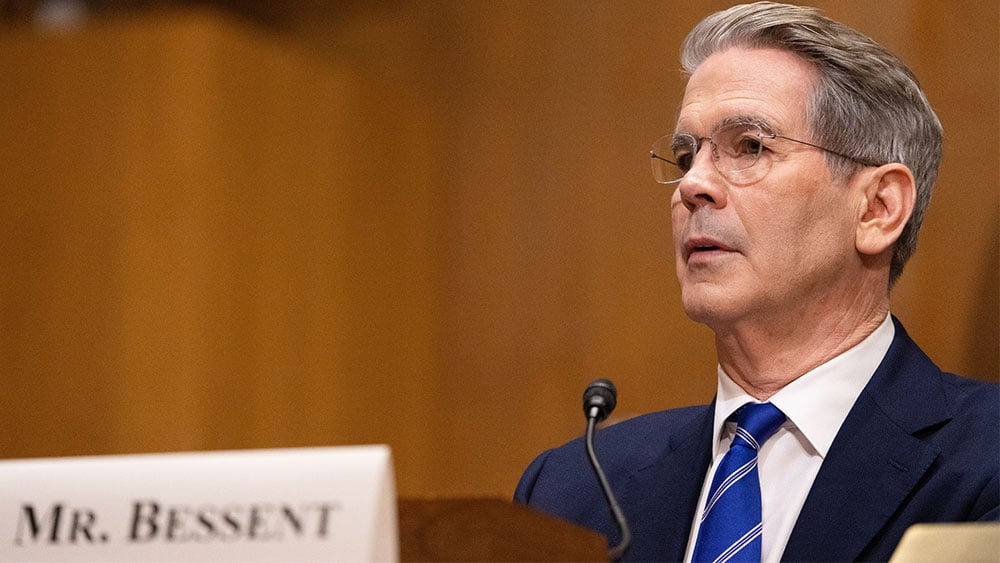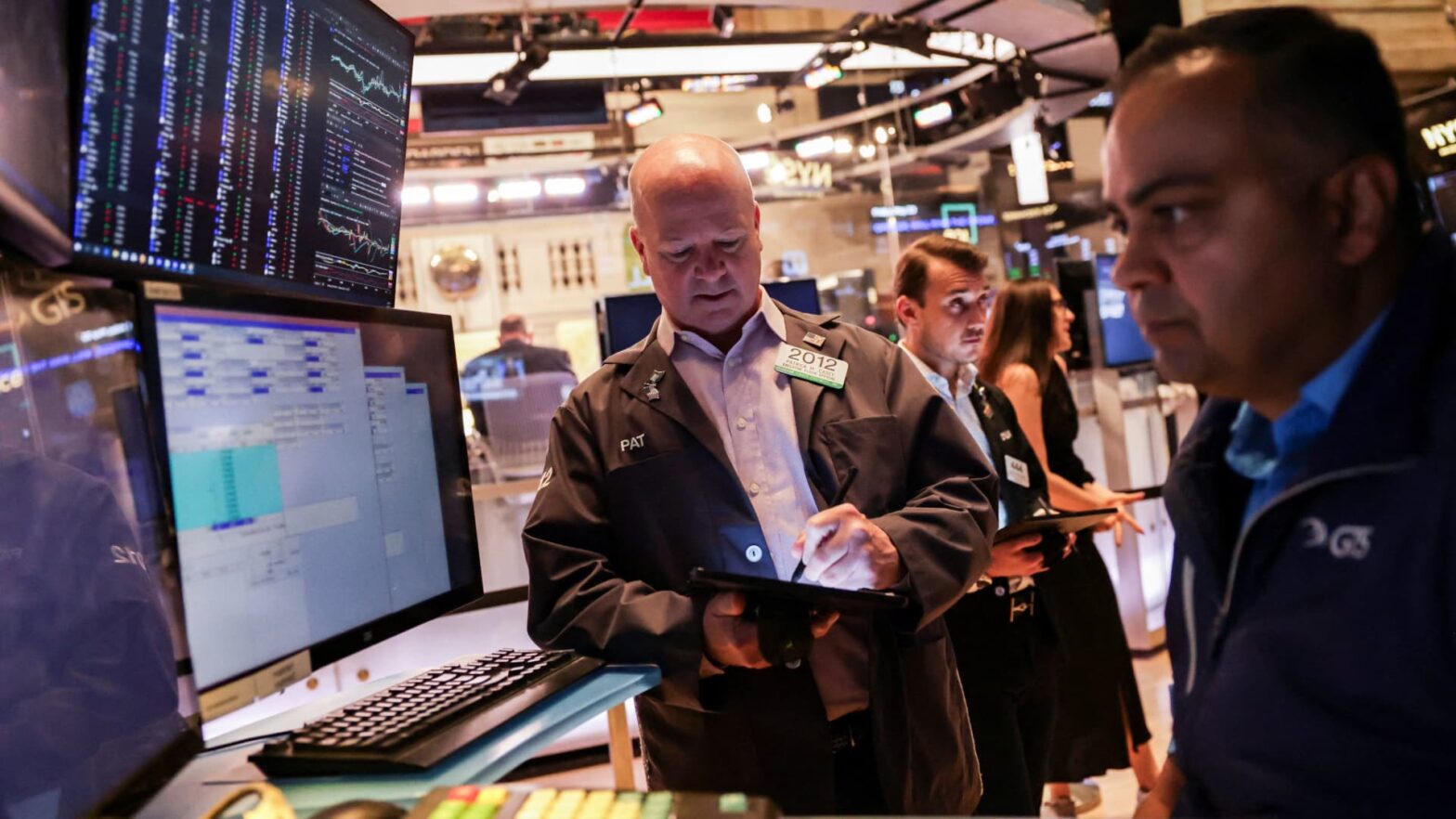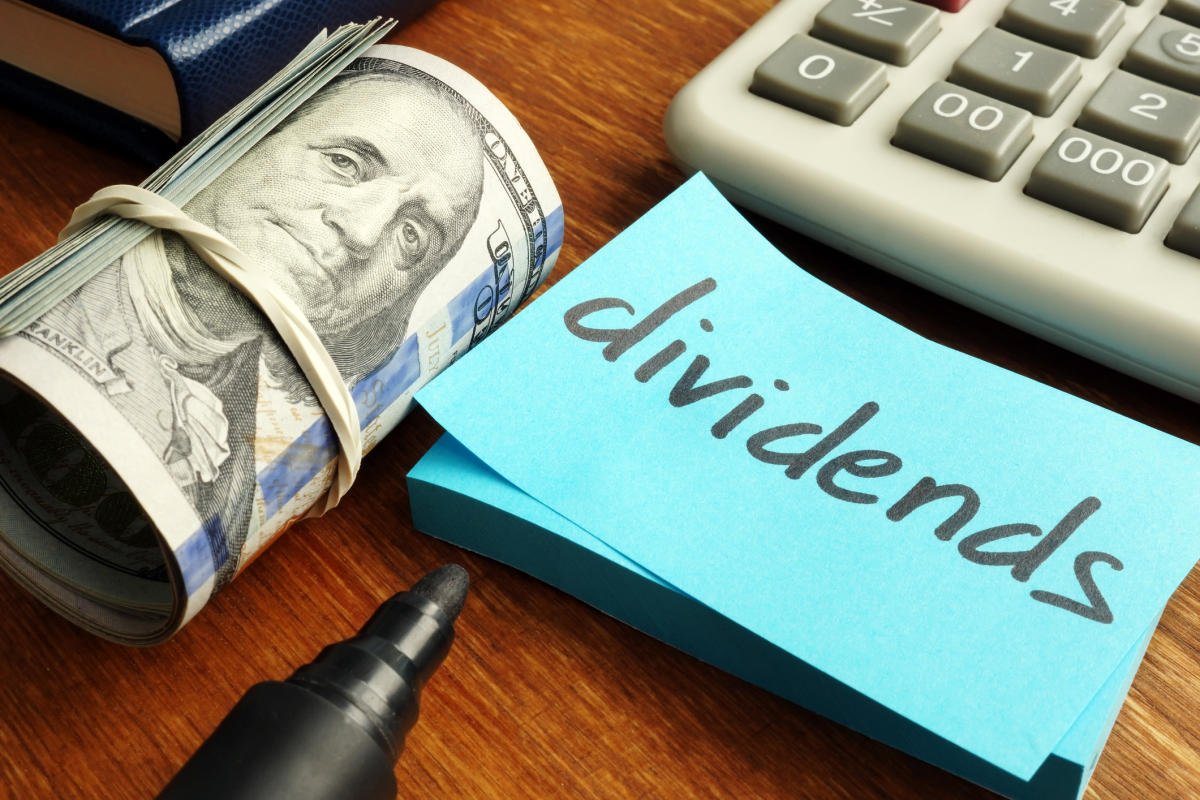Updated 2 min read
In This Article:
US stocks wavered on Tuesday as the OECD warned of economic damage from President Trump’s tariffs, putting investors on watch for progress in US trade talks.
The S&P 500 (^GSPC) rose 0.1%, while the Dow Jones Industrial Average (^DJI) traded near the flat line. The tech-heavy Nasdaq Composite (^IXIC) gained 0.4% on the heels of an upbeat start to the week for the major gauges.
The OECD has slashed its outlook for global economic growth, citing the impact of Trump’s trade policy on investment and confidence. The US economy will slow particularly sharply, the OECD forecast, going from 2.8% growth last year to only 1.6% this year and 1.5% in 2026.
In another sign of trade war taking a toll, China’s manufacturers suffered their worst slump since 2022 in May. Tariff hikes had an impact on smaller exporters despite the US-China trade truce, a private survey found.
Countries need to act fast to seal deals to lower trade barriers, the OECD urged. Trump is reportedly pushing trade partners for their “best offers” by Wednesday, as deadlines for the implementation of “reciprocal” tariffs loom. But progress in trade talks with key nations seems to have stalled as US-China tensions simmer amid hopes for a call between Trump and President Xi as soon as this week.
Read more: The latest on Trump’s tariffs
A JOLTS update showed that job openings unexpectedly rose in April as tariff hikes took effect. With 7.39 million jobs open at the end of the month, the report sets the stage for the all-important May jobs report, which is set for release on Friday.
Meanwhile, with nearly all of the S&P 500 companies having finished reporting their results, earnings season is coming to an end. On Tuesday, CrowdStrike (CRWD), Asana (ASAN), and Hewlett Packard Enterprise (HPE) will issue their reports.
LIVE 11 updates
-
Bond market ‘caught in the middle’ as growth policies clash with inflation risks
The bond market is caught in a tug-of-war between pro-growth stimulus and inflationary pressures, leaving investors with few clear signals and rising long-term yields.
“We have policies that on the one hand will boost growth like expansive fiscal stimulus,” Kathy Jones, chief fixed income strategist at Charles Schwab, told Yahoo Finance. “Then we have some that will slow growth, like tariffs. …So the bond market is just caught in the middle.”
Long-term Treasury yields have climbed in recent weeks, driven by concerns over the US fiscal trajectory as President Trump’s sweeping tax legislation, estimated to add $4 trillion to the national debt over the next decade, heads to the Senate after clearing the House. Trump has vowed to sign the bill into law by July 4.
“We haven’t seen this for decades,” Jones said, pointing to the recent bond market moves as a reflection of “a lot of worries and uncertainty.”
“I’ve been doing this a long time,” she added. “And we haven’t worried about the 30-year for a very long time.”
While short-term yields have stayed relatively steady amid expectations that the Fed will keep interest rates unchanged, longer-term yields have climbed more sharply as investors demand greater compensation for mounting deficits and heightened policy risks.
Historically, deficits have had little impact on Treasury yields, largely due to the US’s economic dominance and its role as issuer of the world’s reserve currency. But that dynamic may be shifting.
“It feels like we’re hitting an inflection point,” Jones said, warning that markets are demanding a greater risk premium from Washington.
Adding to the pressure, provisions in the proposed legislation, such as the Section 899 clause, could raise the cost of holding US assets for foreign investors. Jones warns this may undermine a vital source of demand for Treasurys.
“Anything that discourages foreign investment in any way, shape or form, whether it’s direct investment or through financial instruments, is going to be negative,” she said. “We run a large current account deficit. We need that capital inflow. And if we’re not getting it, that’s going to depress our economy, which means that yields have to rise to a level where foreign investors find them attractive.”
Layer in uncertainty around tariffs and inflation, and the fixed income landscape becomes even more difficult to navigate. For now, Jones is steering investors toward the intermediate part of the yield curve, where there’s “a lot less volatility and risk.
-
Job openings rise more than expected in April
Job openings unexpectedly rose in April after hovering near a four-year low the month prior.
New data from the Bureau of Labor Statistics showed 7.39 million jobs open at the end of April, an increase from 7.2 million in March. The data comes as investors closely watch for any signs that economic growth may be slowing further.
The March figure was revised higher from the 7.19 million open jobs initially reported. Economists surveyed by Bloomberg had expected Tuesday’s report to show 7.1 million openings in March. The April survey included data from the first month that the most severe versions of President Trump’s tariffs were in effect.
The Job Openings and Labor Turnover Survey (JOLTS) also showed that 5.57 million hires were made during the month, up slightly from the 5.4 million made during March. The hiring rate ticked up to 3.5% from 3.4% prior. In one sign that workers may become more cautious about labor market conditions, the quits rate, a sign of confidence among workers, moved down slightly to 2% from 2.1% in March.
-
Stocks waver as investors wait for trade talk updates
US stocks wavered on Tuesday as investors await more updates on President Trump’s tariffs.
The S&P 500 (^GSPC) traded near the flat line while the Dow Jones Industrial Average (^DJI) fell about 0.1%. The tech-heavy Nasdaq Composite (^IXIC) was little changed on the heels of an upbeat start to the week for the major gauges.
DJI – Free Realtime Quote USD
As of 11:22:59 AM EDT. Market Open.
^DJI ^GSPC ^IXIC
-
Trending tickers: Applied Digital, CoreWeave, and nuclear stocks jump on AI deals
Here are some top stocks trending on Yahoo Finance this morning:
Applied Digital (APLD) stock added 8% in premarket trading to a whopping 48% gain on Monday after announcing it signed two long-term lease agreements with Nvidia-backed CoreWeave (CRWV) for AI data centers. CoreWeave also rose 4% premarket.
Constellation Energy (CEG) jumped 11% after the energy company secured a 20-year nuclear power purchase agreement from Meta (META). The deal also boosted other nuclear stocks, including Vistra (VST) (up 5%) and Oklo (OKLO) (up 6%). Scroll down to read more about Constellation’s deal.
Dollar General (DG) stock surged 11% on better-than-expected earnings and a raised annual forecast. The discount retailer is expected to be resilient in a weaker economic environment.
Pinterest (PINS) shares gained nearly 4% after JPMorgan upgraded its rating on the stock to Outperform from Neutral. The JPMorgan analysts also raised their price target on the stock to $40 (from $35 previously), citing improving user numbers and ad technology.
-
Constellation Energy stock pops on nuclear power agreement with Meta
Constellation Energy (CEG) stock surged more than 12% in premarket trading following news that it struck a 20-year power purchase agreement (PPA) with Meta (META). Meta stock was roughly unchanged.
Starting in June 2027, Meta will buy 1,121 megawatts of energy from Constellation’s Clinton nuclear facility in Illinois, powering its AI ambitions while supporting its clean energy goals, a release stated.
The Clinton Clean Energy Center was nearly retired in 2017 after financial losses, but a state clean energy program kept the facility operational until mid-2027. Meta’s PPA now ensures that the plant will continue to run once that program ends, essentially replacing that financial support.
Though Constellation and Meta did not announce a price tag for the deal, they noted it “backs billions in plant investments,” marking one of the largest nuclear energy agreements so far.
Meta has signed a number of power purchase agreements in recent months — along with the other hyperscalers like Google (GOOG), Amazon (AMZN), Microsoft (MSFT) — as Big Tech races to ensure it can power the artificial intelligence boom.
-
Deutsche Bank lifts S&P 500 year-end target amid Wall Street upgrade wave
-
Dollar General stock jumps 10% after beating quarterly sales estimates
Shares in Dollar General (DG) rose 10% in premarket trading on Tuesday, after the retailer raised its annual sales forecast and beating quarterly sales estimates on robust demand for everyday essentials.
Reuters reports:
-
Good morning. Here’s what’s happening today.
-
The ‘Magnificent 7’ are outperforming other stocks again — here’s why
Yahoo Finance’s Josh Schafer reports:
-
Trump’s tariffs are hurting the US and global economy, OECD warns
President Trump’s trade war has dragged the global economy into a downturn, with the US among those hardest hit, the OECD has warned.
Trade barriers and uncertainty are stifling investment and undermining confidence, the organization said on Tuesday as it slashed its forecasts for leading economies for the second time this year. Trump’s policy shift is also adding to inflationary pressures, it said.
The Financial Times reported:
-
Oil rises as supply issues in major producers appear
Oil prices rose Monday evening as major producers Iran and Canada were struck with issues. Iran has an ongoing deal with the US in jeopardy over a potential pivot to nuclear while Canada is facing wildfires.
Reuters reports:


















